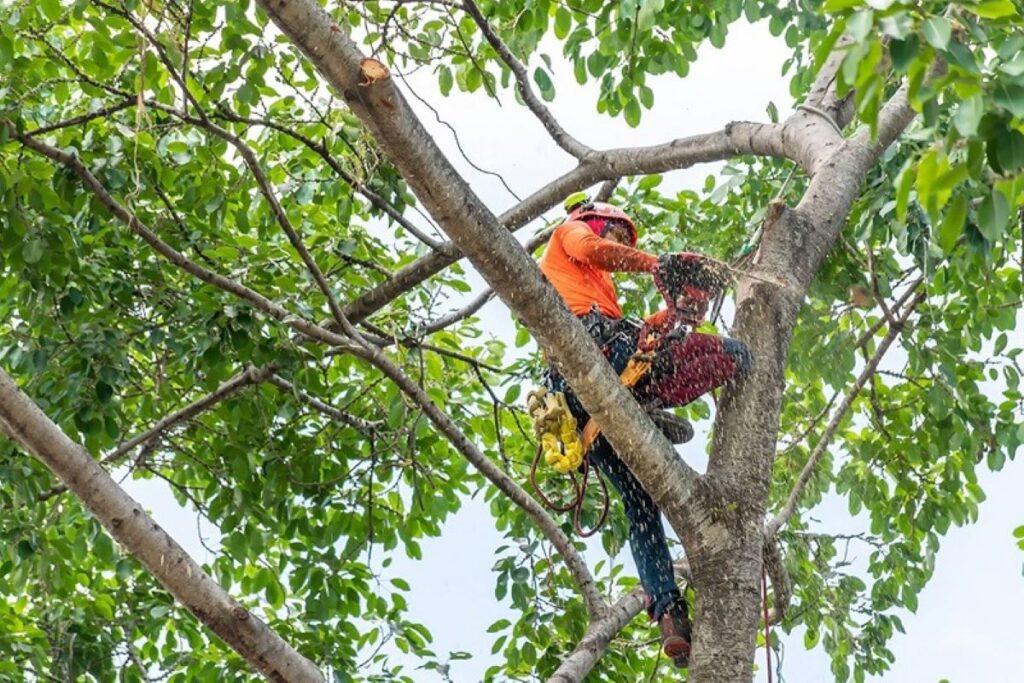Arborists play a crucial role in maintaining the health and aesthetics of trees in urban environments. As professionals trained in the art and science of tree care, they are responsible for a variety of tasks, from planting and pruning to diagnosing tree diseases and managing tree risk. With the advent of technology, the arboriculture industry is witnessing a significant transformation, particularly through the adoption of arborist software. This article delves into the multifaceted world of arborists, exploring their responsibilities, the impact of technology, and the future of tree care management.
The Role of Arborists
Tree Care and Maintenance
At the core of an arborist’s responsibilities is the care and maintenance of trees. This includes routine tasks such as pruning, which not only enhances the tree’s appearance but also promotes healthy growth. Proper pruning techniques can prevent disease and reduce the risk of falling branches, which is particularly important in urban settings where trees are often in close proximity to buildings and pedestrians.
In addition to pruning, arborists are trained to assess the overall health of trees. They can identify signs of disease or pest infestations and recommend appropriate treatments. This proactive approach is essential for maintaining the urban canopy, which provides numerous environmental benefits, including improved air quality and reduced heat island effects.
Risk Assessment and Management
Another critical aspect of an arborist’s role is risk assessment. Trees can pose significant hazards, especially in storm-prone areas. Arborists use their expertise to evaluate the structural integrity of trees, identifying any potential risks to public safety. This involves inspecting the root system, trunk, and branches for signs of weakness or decay.
In 2023, over 1,000 municipalities and private firms in the U.S. began utilising arborist software for risk assessment and maintenance. This shift towards digital solutions indicates a growing recognition of the importance of thorough risk management in urban forestry. By leveraging technology, arborists can conduct more accurate assessments and implement timely interventions to mitigate risks.
The Impact of Technology on Arboriculture
Adoption of Arborist Software
The arborist software market is experiencing rapid growth, projected to reach $1.94 billion by 2034, with a compound annual growth rate (CAGR) of 16.23% from 2025 to 2034. This surge is driven by the increasing adoption of digital tools among arboriculture professionals. In 2023, 67% of these professionals adopted digital tools for tree inventory and scheduling, significantly reducing manual processing by 48%.
Web-based platforms accounted for 62% of arborist software deployments in 2023, highlighting a trend towards accessible, cloud-enabled solutions. These platforms allow arborists to manage tree inventories, schedule maintenance tasks, and track the health of trees more efficiently than ever before.
Integration of Advanced Technologies
Recent developments in technology have further enhanced the capabilities of arborists. For instance, a 2023 study demonstrated that integrating deep learning approaches with UAV (Unmanned Aerial Vehicle) data for tree inventory and vitality assessment can significantly improve task planning for arborists and foresters. This innovative approach allows for more precise data collection and analysis, enabling arborists to make informed decisions about tree care.
Moreover, partnerships between companies, such as the collaboration between Davey Tree Expert Company and tech platforms, reflect the industry’s commitment to embracing digitalisation. By integrating software capabilities for inventory and risk mapping, these partnerships are paving the way for more efficient and effective tree management practices. Check out more about Understanding Arborist Services in Sydney.
The Future of Arboriculture
Growing Demand for Arborists
The demand for arborists is expected to grow as urban areas continue to expand. The Tree Care Industry Association (TCIA) represents approximately 1,600 businesses in the U.S., employing over 150,000 people. This workforce accounts for an estimated 75% of all tree care workers in the country. As cities recognise the importance of maintaining healthy urban forests, the need for skilled arborists will only increase. Click here to get more about urban forest strategy.
Furthermore, the integration of technology into arboriculture is likely to attract a new generation of professionals. As digital tools become more prevalent, aspiring arborists will need to be proficient in using software for tree management, inventory tracking, and risk assessment. This shift will not only enhance the efficiency of tree care but also improve the overall quality of service provided to clients.

Environmental Considerations
As the world grapples with climate change, the role of arborists in promoting sustainable practices is becoming increasingly important. Arborists are not only responsible for maintaining individual trees but also for contributing to the overall health of urban ecosystems. By planting native species and promoting biodiversity, they can help mitigate the effects of climate change and enhance urban resilience.
Moreover, the use of technology in arboriculture can facilitate better environmental practices. For example, software that tracks tree health can help identify areas where reforestation efforts are needed, ensuring that urban forests are maintained and expanded in a sustainable manner. This proactive approach is essential for creating greener, healthier cities.
Conclusion
Arborists are vital to the health and sustainability of urban forests. Their expertise in tree care, risk management, and the adoption of innovative technologies positions them as key players in the fight against climate change and urbanisation challenges. As the arborist software market continues to grow, so too will the opportunities for professionals in this field. By embracing digital tools and sustainable practices, arborists can ensure that our cities remain vibrant and green for generations to come.
